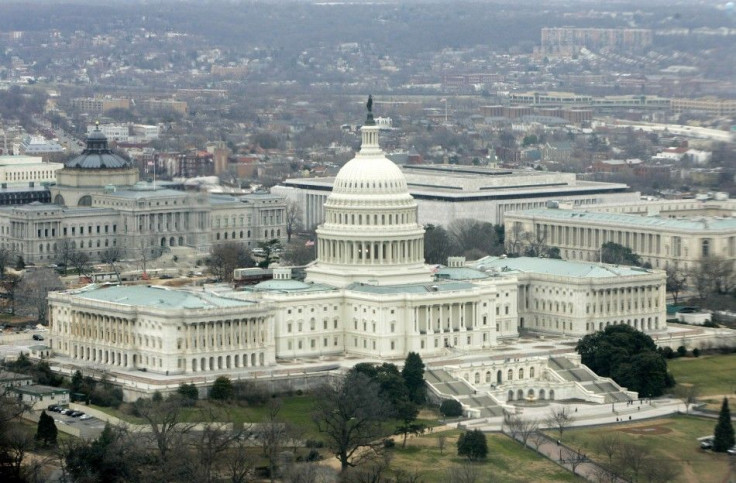Separate Debt Deal Plans Emerge Amid Gridlock

Analysis
As investors and policy makers grew increasingly worried that Congress and President Barack Obama are stretching financal institution patience to the limit, two strategies emerged as the likely solutions to the debt deal impasse.
One strategy, backed by House Speaker John Boehner, R-Ohio, would involve $1.2 trillion in spending cuts in exchange for an equal rise in the debt ceiling.
Under that plan, Congress would also create a 12-member committee staffed with lawmakers from both the House and Senate and tasked with identifying at least $1.6 trillion in additional savings by a deadline set for later this year, The Washington Post reported Monday. Those savings would be paired with a second debt-limit increase, meeting Boehner's dollar-for-dollar condition.
Obama has repeatedly said he will veto any short-term debt increase if it is not attached to a comprehensive plan to both cut the deficit substantively for 10 years and raise the debt limit.
A second plan, one spearhead by Senate Majority Leader Harry Reid, D-Nev., would ask Congress to make about $2.7 trillion up-front budget cuts, raise the debt ceiling by $2.4 trillion, but would leave Medicare and Medicaid untouched, Bloomberg News reported Monday.
The dueling plans will likely encounter predictable resistence in the opposing chambers: Senate Democrats resistant to Boehner's plan; House Tea Party/Republicans resistant to Reid's plan. At least initially, there was no talk of a compromise between the two plans.
However, from a institutional investor standpoint, that consensus has to occur soon. That's because a U.S. Government default -- or even the hint of that fault- - would force institutional investors to 'price-in' the increased risk -- i.e. increase the interest rate it asks to hold U.S. debt, U.S. Treasury Secretary Timothy Geithner reiterated Sunday.
In addition, because the U.S. Government is considered the lowest risk in the world -- those higher interest rates -- or increased risk -- would ripple through the financial system -- pushing up interest rates on everything from home mortgages, to car loans, to credit cards and student loans, among other destructive consequences.
Geithner, among other monetary and fiscal officials, and market participants, are becoming increasingly worried that the stalemate risks roiling the financial markets, although Asia's markets were relatively calm on Monday at mid-day. Japan's stock market was up about 1 percent, the dollar was slightly stronger against the euro at $1.4364, and the interest rate on the 10-year U.S. Treasruy note was up just 0.03 of a percentage point ot 3.00 percent.
Political/Public Policy Analysis: T-minus 8 days, and 16 hours and counting, until the default deadline, and as Geithner underscored, Congress needs to act, preferably by Monday at mid-day, Washington time (EDT).
So far, institutional investor patience has been remarkable, in the face of the Republicans' and Democrats' brinksmanship. The risk now is that each party tries to go for a 'political win'...resulting in a loss for the nation. The debt crisis remains solvable, provided each party deploys that time-honored, American tradition: compromise.
Financial markets are beginning to get concerned that the debt ceiling will not be raised. Therefore, it behooves Democrats and Republicans to forge a debt deal that also substantially cuts the deficit, as soon as possible. The bond market could begin to get bumpy Monday, hence time is obviously of the essence.
With no sign of an immiment deal, the risk barometer, on a scale of 0 to 100 percent, of the likelihood of a U.S. Government default, has been increased to 30 percent on Monday morning, 10 percentage points higher than it was Sunday night.
© Copyright IBTimes 2024. All rights reserved.





















